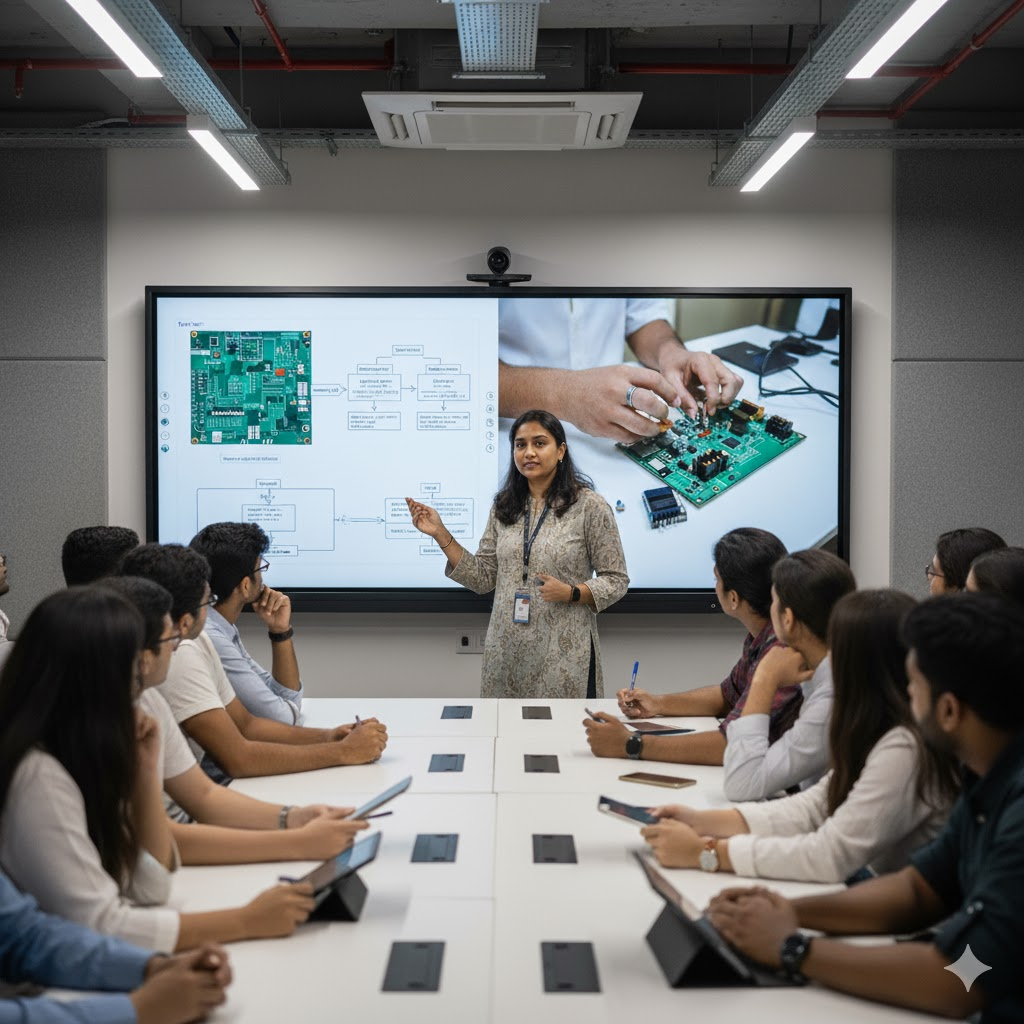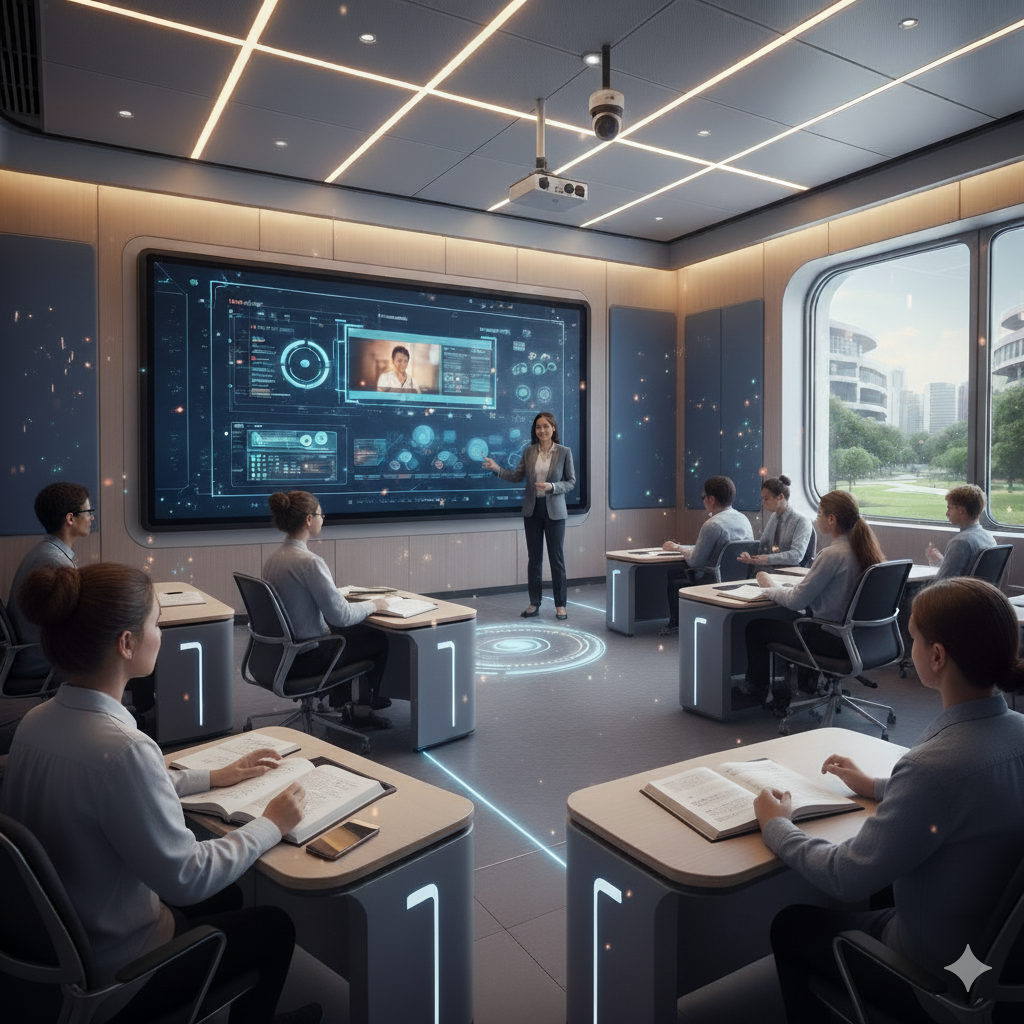How Interactive Displays Reduce Presentation Fatigue for Educators and Trainers

Teachers and trainers handle far more than content delivery. They stand, speak, guide, manage questions, switch tools, and keep a room focused from start to end. By the end of a long session, the strain doesn’t come from teaching itself. It comes from the countless small tasks that happen around it.
Most of these micro-tasks show up during presentations, demonstrations, or teacher-training sessions. And over time, they drain energy faster than anyone expects.
This is where the right interactive display makes a noticeable difference. Whether you use an interactive flat panel or a smart board, the right features ease the load on educators and support smoother sessions in schools, colleges, skill institutes, and training centres.
Below is a clear look at how these displays reduce presentation fatigue in learning environments.
1. Less Walking, More Teaching
A familiar routine in many classrooms looks like this:
You walk to the laptop.
You change the slide.
You walk back to the class.
You repeat the point.
You return to the laptop again.
It adds up. Not because the tasks are difficult, but because they interrupt your flow.
With a modern interactive display, teachers manage everything directly on the screen. A tap replaces repeated walking. A swipe moves the lesson forward. You stay near the students instead of shifting between devices.
Over a full day of lessons or training sessions, this alone reduces physical strain in a big way.
2. Touch Controls that Keep Sessions Smooth
Touch-based navigation improves lesson flow immediately. You no longer need a mouse or keyboard. You interact with the screen the same way students interact with tablets or touch devices.
You can:
• move through lessons with simple gestures
• open videos or apps without switching devices
• zoom into diagrams instantly
• jump between resources without breaking rhythm
This puts attention back on students instead of controls.
Teachers, guest speakers, and academic trainers benefit the most because their sessions often move between topics quickly.
3. Spotlight and Focus Tools that Reduce Repetition
In busy classrooms, students don’t always know where to look. The same happens in teacher workshops and orientation sessions. Educators repeat explanations simply because the visual isn’t clear to everyone.
Interactive displays solve this with built-in spotlight and highlight tools. You can dim the rest of the screen and guide attention to the exact point you’re discussing. It removes the need to re-explain diagrams or text multiple times.
For schools and institutes that run frequent demonstrations or subject-training sessions, this saves both time and energy.
4. Split-Screen Views that Make Transitions Easier

One of the hidden causes of presentation fatigue is constant switching between apps during lessons.
A teacher moves from: slides → browser → videos → notes → worksheets.
Each switch breaks the pace.
An interactive display handles this with multi-window and split-screen views. You can place two resources side by side, or keep your main lesson open while showing a reference. This prevents awkward pauses and keeps students focused.
Skill institutes and technical training centres benefit most here, as they often show practical steps alongside explanations.
5. Wireless Casting that Frees the Teacher from the Desk
Teachers often move around to guide students, observe work, or manage group tasks. Returning to the desk repeatedly to change slides interrupts this movement.
Wireless casting allows educators to control the interactive display using a tablet or laptop from anywhere in the room. You stay close to students while moving the lesson along. This helps during group work, lab demonstrations, and hands-on training sessions.
Teacher-training workshops also run smoothly because the presenter doesn’t need to stand in one place throughout.
6. Built-In Annotation that Cuts Down Extra Prep Work
Teachers and trainers often prepare extra versions of the same slide because they want to write on it, break it down differently, or mark it up during discussion. Interactive displays remove that extra prep.
You can:
• write directly on the lesson
• circle important parts
• highlight text
• erase quickly and continue
This helps subject teachers, guest trainers, and institute faculty explain concepts without juggling between tools.
7. Recording Features that Reduce Repeated Effort
In many institutions, the same session must be repeated for different batches. Orientation talks, teacher development sessions, and foundation classes often run multiple times.
With an interactive flat panel, you can record the entire session with one tap. The recording includes audio, screen activity, and annotations.
This gives you:
• an archive for absent students
• reusable content for future batches
• a way to avoid repeating the same lesson multiple times in one week
It saves both time and effort for teaching staff.
8. Better Visibility and Sound that Reduce Voice and Eye Strain
Small screens, dim projectors, and uneven sound distribution often force educators to raise their voice or repeat instructions. This is tiring and affects the quality of lessons across the day.
Interactive displays are built to solve this:
• bright screens that stay clear in daylight
• wide viewing angles for large classrooms
• front-firing speakers
• crisp sound for both teacher and students
This eases the load on the teacher’s voice and keeps the room more attentive.
9. Why These Features Matter More in Education Than Anywhere Else
Teachers present multiple times a day. Trainers run back-to-back sessions. Academic heads conduct workshops, meetings, and parent sessions. Unlike corporate environments, the pace in educational spaces is relentless. Small improvements in comfort lead to big improvements in delivery.
Interactive displays don’t just make lessons look modern. They support the people standing at the front of the room, the ones who carry the energy of the session.
A Quick Checklist for Schools and Institutes
Before choosing an interactive display, decision-makers can ask:
• Can the teacher control lessons directly on the screen?
• Does the display support simple, fast navigation?
• Are spotlight or highlight tools available?
• Can teachers annotate on any source?
• Is split-screen mode supported?
• Is wireless casting easy and reliable?
• Is the screen bright enough for large rooms?
If the answer is yes, the display will ease presentation fatigue and improve teaching comfort across the campus.
The Bottom Line
Presentation fatigue doesn’t come from teaching. It comes from constant switching, repeated gestures, and breakpoints during lessons. A well-designed interactive display minimizes those friction points.
Whether it’s an interactive whiteboard or an interactive smart board, the right features help educators stay focused, energetic, and connected with their students.
When teaching tools work naturally, teachers have more time and more energy to do what they do best.
Roombr gives educators a simple way to teach, present, and record without juggling multiple devices. Take a closer look at how it fits into real classrooms and training rooms.
Foziya Abuwala
Share
Step Into the future of
Education with Roombr

















